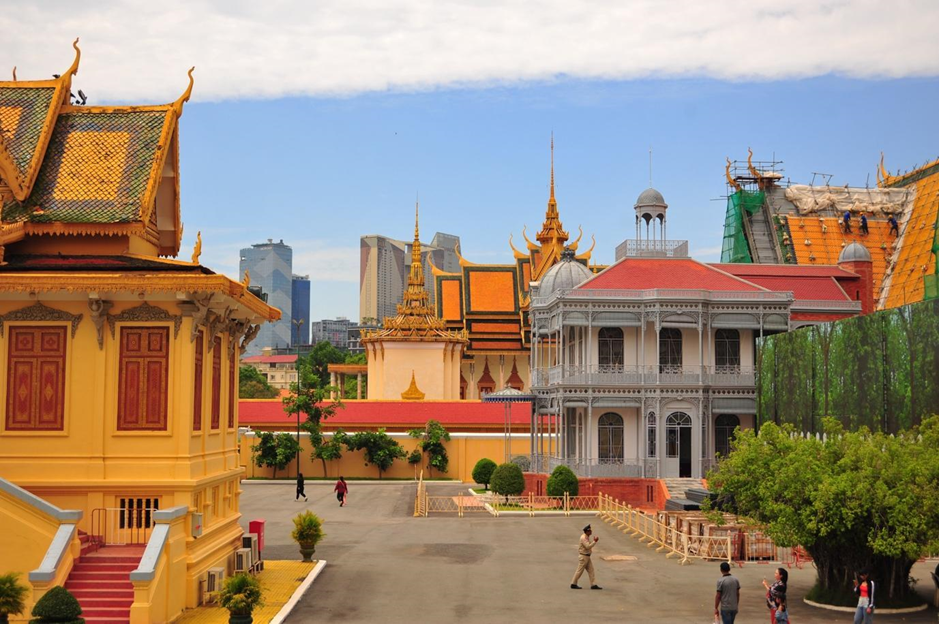Archive & Chronicle: Past, Present, the cycle of time in Cambodia
- Chroniqueur

- Aug 25
- 2 min read
The new pagoda is located not far from Tonlé Sap Lake, about 20 kilometres from Siem Reap. The monks chose pink as the colour for their new creation. They have just demolished the old pagoda, which was adjoining and certainly a century old, judging by the remains.

Several sections of walls delicately painted with frescoes depicting Buddha's ascension to Nirvana remain beneath the rubble. Not everything has been destroyed, and builders have salvaged cement tiles from the colonial era. They are stored nearby, along with huge mahogany columns that a few men dressed in saffron robes are cutting up with axes, without remorse. Everything will be used again, elsewhere.
Time, as it passes, is not appreciated in the same way in all corners of the globe. In Southeast Asia in general, and Cambodia in particular, the present, the past and the future do not have the same value as in our Western societies.
Here, the cycle of time is a wheel that turns on itself through reincarnation. Everything is constantly renewed. It exists, dies and is reborn somewhere else. Here or elsewhere.
The Western view of time is linear, with a before, during and after on the line of life. What symbolises the past is important to Westerners, who are generally attached to old things. Cambodians are not ignorant of their past, but they are not very interested in the material things that represent it. Preparing for death and earning merit points for the next life are major concerns. Cherishing possessions because they have sentimental value over time is of little importance to them. New things are necessarily beautiful, especially if they are expensive. And old things must always be replaced, especially if they are worn out. Over the years, Phnom Penh has thus almost completely rid itself of its colonial houses. Only those with a definite rental value remain.
Old things are synonymous with poverty. An old house must be demolished to build a new one. An old tree must be cut down to plant a young one, or to ‘plant’ beautiful tiles in its place.
The monks of a pagoda that preserve a century-old pagoda with wooden posts and walls painted with delicate frescoes have not yet found the money to build a beautiful, shiny pagoda.
In his literary masterpiece entitled ‘Water and Light’, George Groslier wrote as early as 1930: "We enter the pagoda of Prèk Pol at around one o'clock. Beyond a vast, almost bare and scorching courtyard stands a reinforced concrete monster, adorned with the brightest colours: the new pagoda. It imitates, in an art of pastry-making and wooden horse rides, the old pagoda, too old and disused, which can be seen to the north, under its double wooden roof, as elegant as a fine mare under saddle." The author was then tasked with cataloguing the old pagodas along the Mekong and Tonlé Sap rivers. Throughout the pages, he laments this abandonment and, all too often, the destruction of the old in favour of the new. The proliferation of tasteless ‘cakes’ continues to this day. The monks have never really stopped their work as builders.
Such is life in the land of smiles. Nothing very new, after all...
Frédéric Amat







Comments